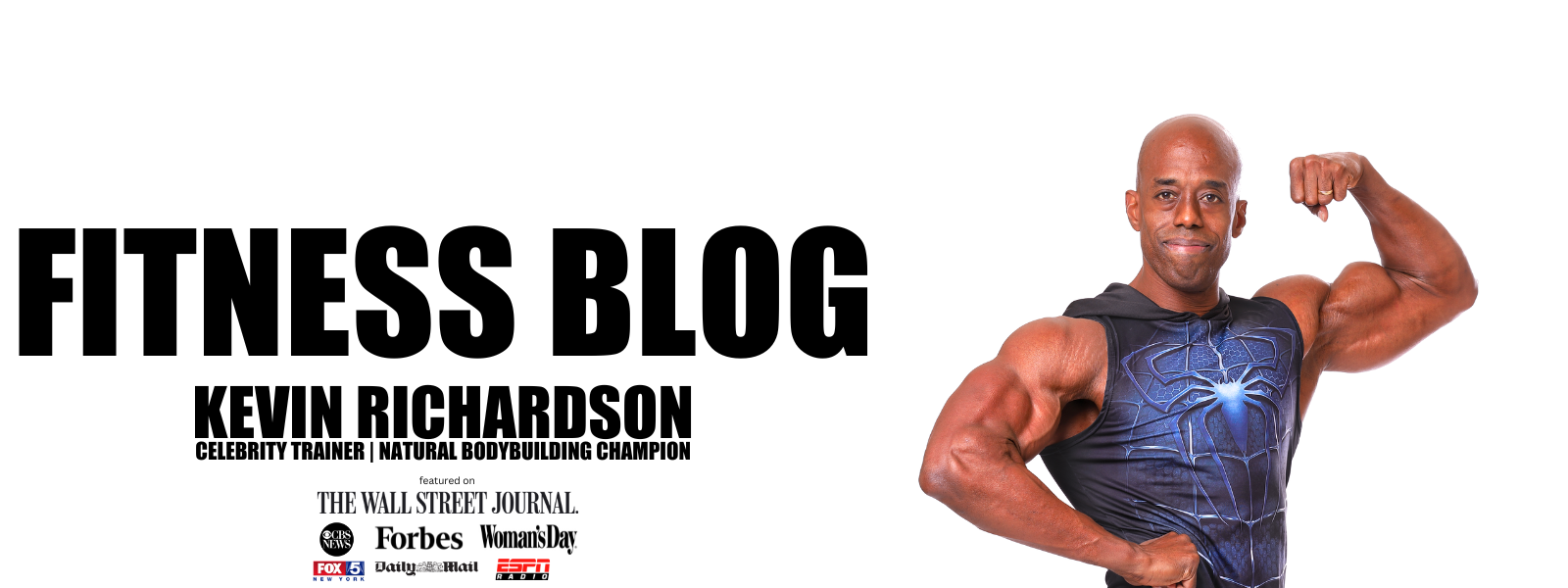How Plastics And Environmental Toxins Can Make You Fat
While we know conclusively that energy balance disorder, overeating, sleep deprivation and even food timing can make you overweight, but how much of an impact does the use of everyday plastics and exposure to environmental toxins affect your potential for weight gain? We fully understand the environmental consequences of plastics and environmental toxins in adversely affecting our environment, but little attention is paid to the role plastics and environmental toxins play in making you gain weight. If you are 40 years old or younger while reading this article, findings from a recent study suggest that you would have to eat less and exercise more than if you were 40 years old or younger in 1971 in order to maintain a stable body weight.[1] A sobering conclusion, and one that indicates that current increases in rates obesity may be due to factors beyond just diet and exercise. Two out of three Americans today are categorized as overweight or obese─ a statistic more than double of what it was 40 years ago, and the problem is not simply an American one. Worldwide, the prevalence of obesity has more than doubled between 1980 and 2014 and for decades health authorities have maintained that energy imbalance is the causative factor.[2,3,4] The theory is that our bodies need a certain amount of energy (measured in calories) from foods in order to survive and provide energy for our activities and that our body weight will tend to remain the same if the number of calories consumed is equal to the number of calories used for metabolic function and physical activity. Over time, if we eat or drink more calories than our body can burn, the energy balance shifts towards weight gain as we store the excess calories as fat, which can in some cases lead to obesity.[4,5] A neatly packaged explanation but one that might not include all the elements involved in why some people gain weight easier than others. While poor diet and insufficient physical activity is unquestionably associated with and a causative factor for weight gain, recent studies have shown that other element factors can play a role as well. Erratic sleeping patterns and consuming most of your calories later in the day, even when energy intake does not exceed energy expenditure have been documented as proximate causes of weight gain,[6,7,8,9,10,11,12,13] (See also my article How Eating Late Can Make You Gain Weight), and there is credible evidence that environmental exposure to chemicals found in pesticides, flame retardants and plastics during key phases of development might also be a factor in the obesity epidemic.[13] In this article we will take a look at the role these chemicals (collectively called obesogens) may play in making it harder for some of us to maintain a healthy body weight and increasing the adverse effects of poor diet and inadequate exercise. Thanks for reading and do be sure to share this article with anyone you think might benefit from it!
How Plastics And Environmental Toxins Can Make You Fat: Understanding Obesogens
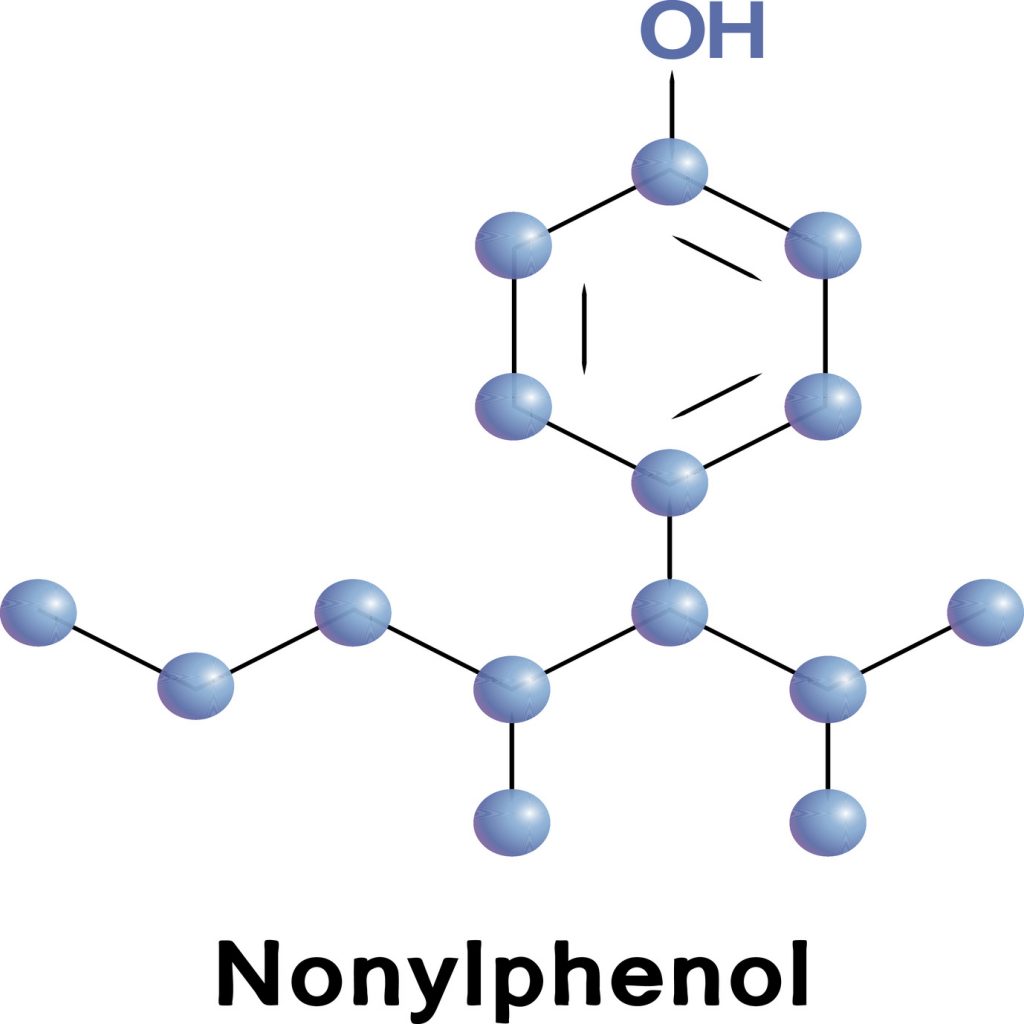
Obesogens are defined as chemicals that either directly or indirectly lead to increased fat accumulation. One way in which obesogens can bring about weight gain is by acting as estrogen mimic and activating a receptor called peroxisome proliferator-activated receptor-y (PPARy) which is the master regulator of fat cell development in our bodies. Activation of PPARy receptors by the endocrine disrupting chemicals that obesogens contain can increase the number of fat cells in the body, increase the amount of fat stored per fat cell and change the number of calories burned while at rest─ thus creating an environment conducive to weight gain and obesity. The effects of PPARy activation from obesogens are not only physical as they can also elicit adverse behavioral responses to food as well as these receptors also control appetite, food preferences and satiety.[14,15] Studies show that specifically activating PPARy in the brain leads to increased feeding and elevated fat accumulation when consuming a high fat diet,[41, 42,43] In tests with animals and in vitro, obesogenic chemicals such as bisphenol-A (BPA), phthalates (eg. PVC), organochlorines (eg. DDT) and tributyltin (TBT) activate PPARy receptors and have the effect increasing fat stores not only in the exposed animal but in the offspring of the animals as well.[16,17] Obesogenic chemicals also act as endocrine disruptors that change the set point of the HPA axis which in turn affects energy balance, appetite and the stress response and disruption of this set point early in life could partly account for why many people have such a difficult time losing weight as adults.[38]
How Plastics And Environmental Toxins Can Make You Fat: The Human Evidence
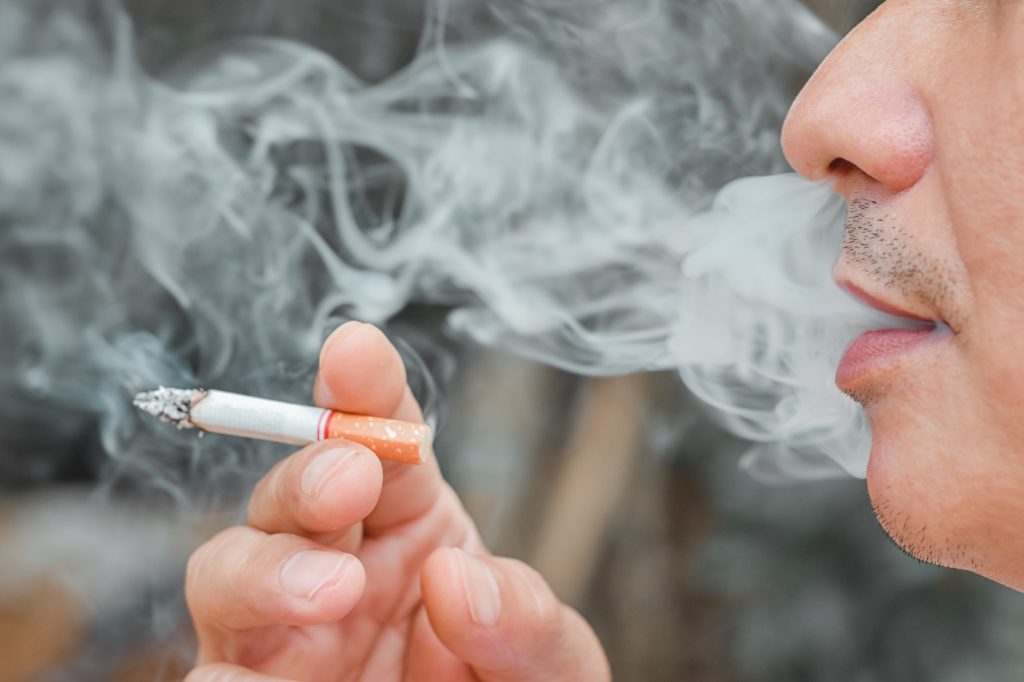
Research thus far has been limited to animals as it is extraordinarily difficult to conduct such invasive tests in humans, but a growing number in the scientific community is convinced that exposure to chemicals that interfere with hormonal pathways can make the human body susceptible to obesity as well. While others counter that tests in animals do not always translate into similar outcomes in humans, we do have some precedents that should make us look at this possibility rather seriously. During the years that I worked in social services with formerly homeless and HIV/AIDS populations, I saw firsthand the effects that chemicals can have on weight gain. Many of my clients at the time were using tricyclic antidepressants and selective serotonin reuptake inhibitors (such as Prozac) and atypical anti-psychotic drugs, and some of them would gain weight even while trying carefully to watch what they ate and exercising regularly. Anti-diabetic drugs (such as thiazolidinedione) have similar effects and all of these drugs are well documented as being linked to obesity in humans by activating PPARy receptors.[18,19,20,21,22,23] The same receptors activated by the aforementioned obesogens in animals and thus many researchers believe that they would have the same effect in humans.[13]
One of the earliest observations of an obesogenic effect from chemical exposure in humans came from studies of exposure to secondhand smoke in utero. Studies found that babies born to mothers who smoked during their pregnancy were frequently underweight at birth yet had an increased risk of obesity and metabolic disease later in life. [34,35,36] The Developmental Origins of Health and Disease model proposes that because of the low birth weight due to cigarette smoke exposure, the infant’s body attempts to “catch up” by gaining weight later in life. These early life exposures during critical developmental phases may lead to permanent changes in metabolic set points in adulthood.[37]
How Plastics And Environmental Toxins Can Make You Fat: DDT Environmental Exposure
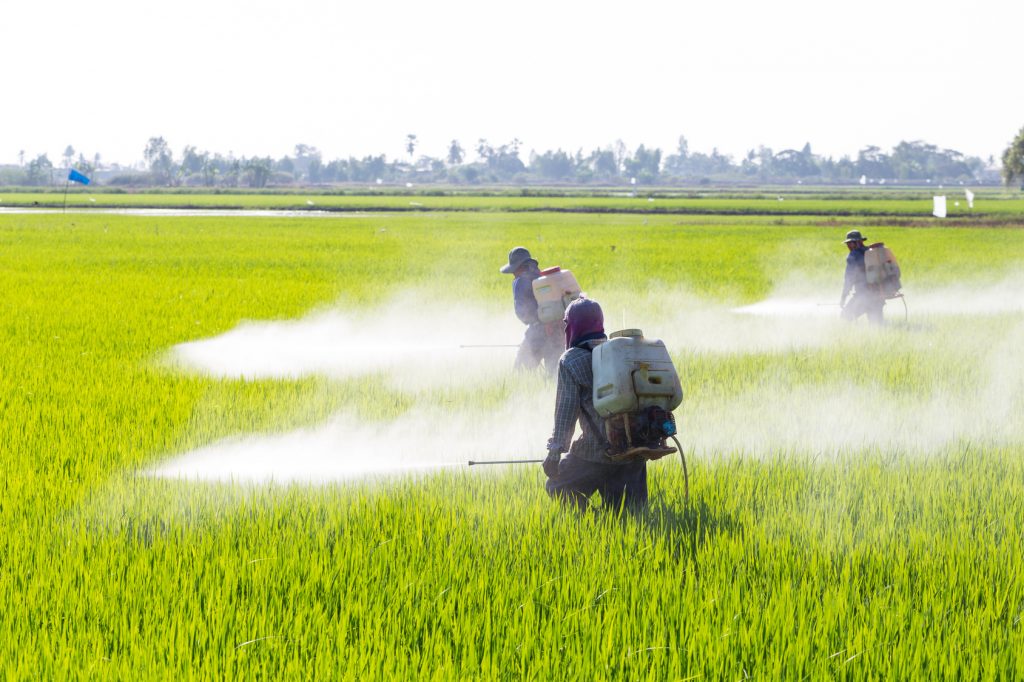
The list of potential obesogens is chilling as many of them are somewhat ubiquitous and almost impossible to escape in everyday life, but what is most disturbing is that most of us have already been exposed to their effects. The pesticide dichlorodiphenyltrichloroethane (DDT) has been shown to be obesogenic and anyone who was pregnant in the United States, Europe or the Caribbean during the 1950’s when it was widely in use would have been exposed. While many today decry the use of DDT in the past, it is nonetheless credited with helping save hundreds of millions of lives [24], by controlling the populations of lice, fleas and mosquitoes on our planet with an effectiveness that has yet to be equaled by any other pesticide. In so doing, DDT stopped countless outbreaks of insect borne infectious diseases such as malaria, yellow fever, typhus, dengue, the plague and encephalitis to name a few. Of these diseases, malaria was (and still is in many parts of the world where DDT use was not widespread) the most insidious killer of human beings throughout history and many of us would not be alive today were it not for the eradication of malaria in these parts of the world through the wide use of DDT. Banned in the early 1970’s several scientists refute the claim that it is indeed harmful to humans, however one important study has shown that it may not be harmful to us in the present but can bring about adverse reactions in future generations. Rats exposed to DDT did not have any unusual changes to their fat cells or body size and neither did their offspring, yet surprisingly, more than 50% of the third generation of rats whose grandparents were exposed to DDT were obese.[25]
Levels of exposure for the rats were not high and was far less than the lowest observed adverse effect level for DDT in humans, yet it still had a marked transgenerational effect. The question is, could the widespread DDT exposures of the 1950’s be partly to blame for the current obesity epidemic in developed countries since most of those affected are the grandchildren and great grandchildren of those who were widely exposed? It’s a question researchers believe require more studies to verify but DDT does affect glucocorticoid and PPARy receptors [26] in a manner similar to other drugs that are known to increase body fat in humans so it is hard to dismiss the possibility, especially when there is some human evidence. Mothers who lived along the shoreline of Lake Michigan were exposed to high levels of DDT and were more likely to have a child who exhibited an elevated Body Mass Index (BMI) as an adult.[39] Another study found that prenatal exposure to DDE (a metabolite of DDT) was associated with rapid weight gain in human infants and higher than normal BMI later in infancy so there could be a possible connection.[40]
Body mass index, energy intake, carbohydrate consumption and leisure time physical activity have all increased here in the United States over the past four decades while fat and protein intake has decreased. However, as I mentioned in the opening paragraph, research shows that today it is harder to maintain the same the same body weight as someone forty years ago who ate the same amount of food as you do and exercised exactly as much as you do.[1] Food timing and irregular sleep patterns might play a role as well but given the ubiquity of obesogenic chemicals in our everyday lives which affect the very pathways that promote weight gain, it would be somewhat naïve to dismiss the role obesogens might be playing.
How Plastics And Environmental Toxins Can Make You Fat: How Widespread Is It?
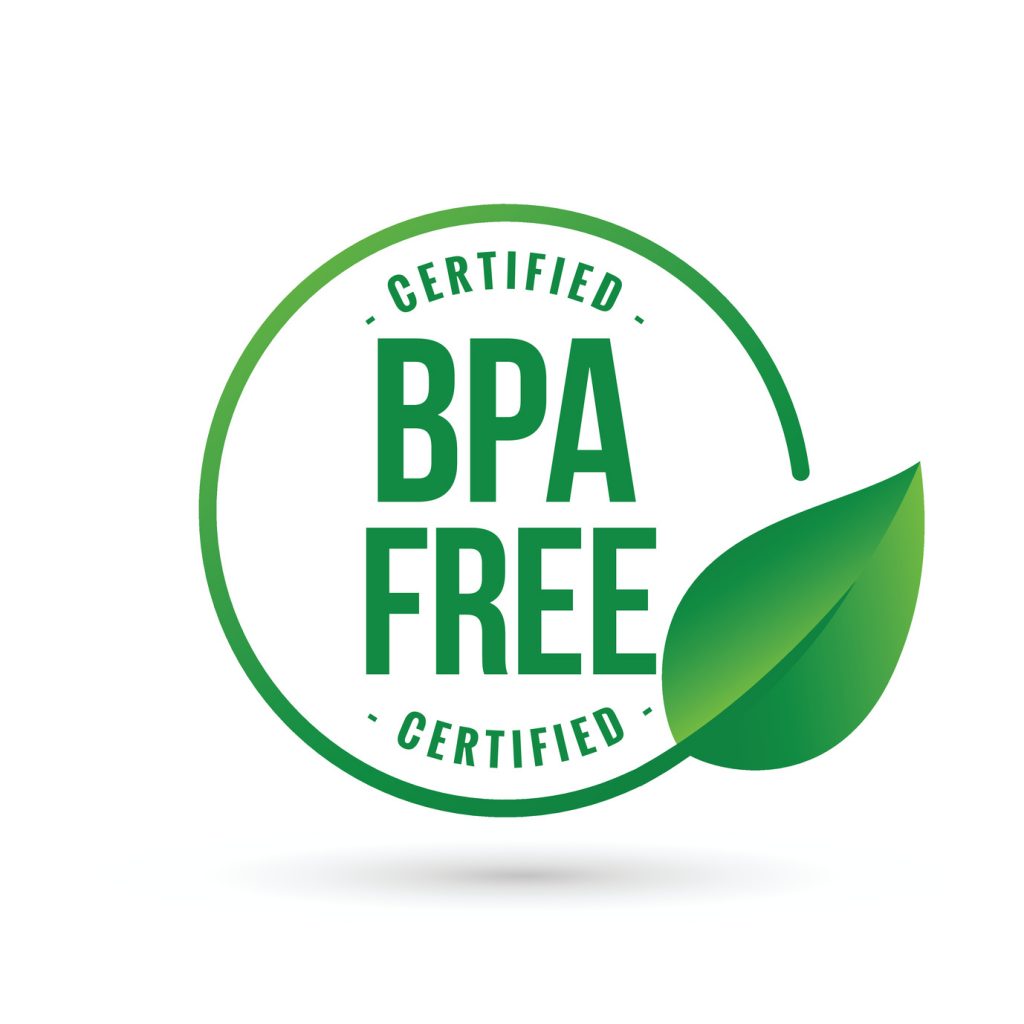
The problem with obesogens is that they literally are everywhere, in food, house dust and water, and in most instances, exposure has already occurred either directly and or from exposure on the part of your parents and grandparents. Here in the U.S., the Environmental Protection Agency (EPA) is responsible for testing chemicals for safety, however there are no randomized, controlled clinical trials to test the effects of environmental substances on obesity.[27] The other issue that makes it difficult to identify potentially harmful chemicals is that receptors in our bodies typically respond to very low doses of hormone. As a result, fat regulating receptors can be activated by very extremely small amounts of chemicals that mimic the effects of estrogen, whereas the higher levels normally used in safety tests can cause receptors to shut down all together and have no adverse effects.[28] Consequently, chemical manufacturers often have their products approved because it would take an unnaturally large dose for them to be poisonous, but the problem is that they are dangerous at the extremely low environmental level doses that we receive on a daily basis and we often don’t know the adverse effects until after years of exposure.[28]
How Plastics And Environmental Toxins Can Make You Fat: List Of Common Environmental Obesogens
Besides DDT, the main chemical obesogens are
Bisphenol A (BPA)
Phthalates
Perfluorooctanoic acid (PFOA)
Tributyltin (TBT)
Heavy metals such as cadmium, arsenic and lead
Bisphenol A (BPA): From Hard Plastics To Cash Register Receipts
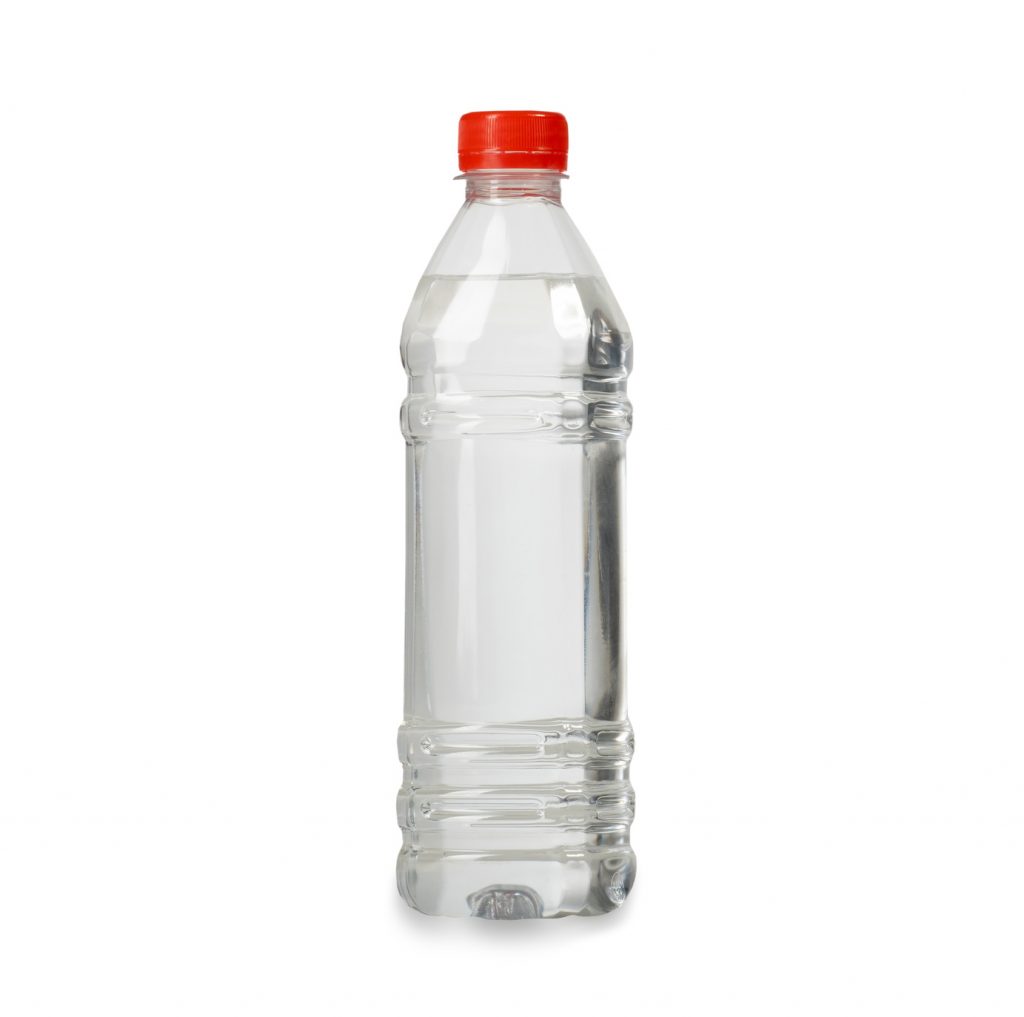
Each year over 6 billion pounds of the estrogenic monomer bisphenol A (BPA) are used to manufacture polycarbonate plastic products. BPA is used in the resins lining metal cans, in dental sealants, medical devices, cash register receipts and in blends with other types of plastic products such as hard, clear plastic food containers. If you used a plastic sports or water bottle made before 2012, it probably contained BPA and if you used baby bottles or sippy cups prior to 2011 it also could have been made with BPA. Any plastic container labeled with a “7” contains BPA and very often items labeled “BPA Free” still contain some BPA.
The problem with BPA is that over time the ester bonds linking BPA molecules in polycarbonate plastics and resins undergo hydrolysis, which results in the release of free BPA into food, beverages, and the environment. A cross sectional study of Americans aged 6 and older found BPA in the urine of 93% of the urine samples of those tested [29] and a national survey found a link between higher urine BPA levels in white children and a greater likelihood of being obese. In the least exposed group, one in 10 children were obese whereas among those with high exposures, the rate of obesity twice as much with was one in five children being obese. [44] Interestingly, Black and Hispanic children did not demonstrate this relationship, and a similar study in China found a consistent correlation between obesity and higher BPA levels in preteen girls, where the more BPA in their urine the more likely they were to be in the heaviest categorization of obesity.[45] The question of course is which came first, BPA exposure or obesity and it calls for more research.
BPA manufacturers describe their product as a weak estrogen, insisting that low levels of exposure are harmless, but as we mentioned earlier, low levels of endocrine mimics are exactly what can wreak havoc with our hormone receptors. The FDA and National Toxicology Program have agreed that recent studies do provide reason for concern over low dose exposure to BPA but have thus far made no moves to ban its use.[30] Thus the onus is on us to minimize our exposure in everyday life, especially since there is no benefit to the use of BPA products and it is something that we can do without.
Phthalates- From PVC and Personal Care Products To Prescription Drugs & Dietary Supplements
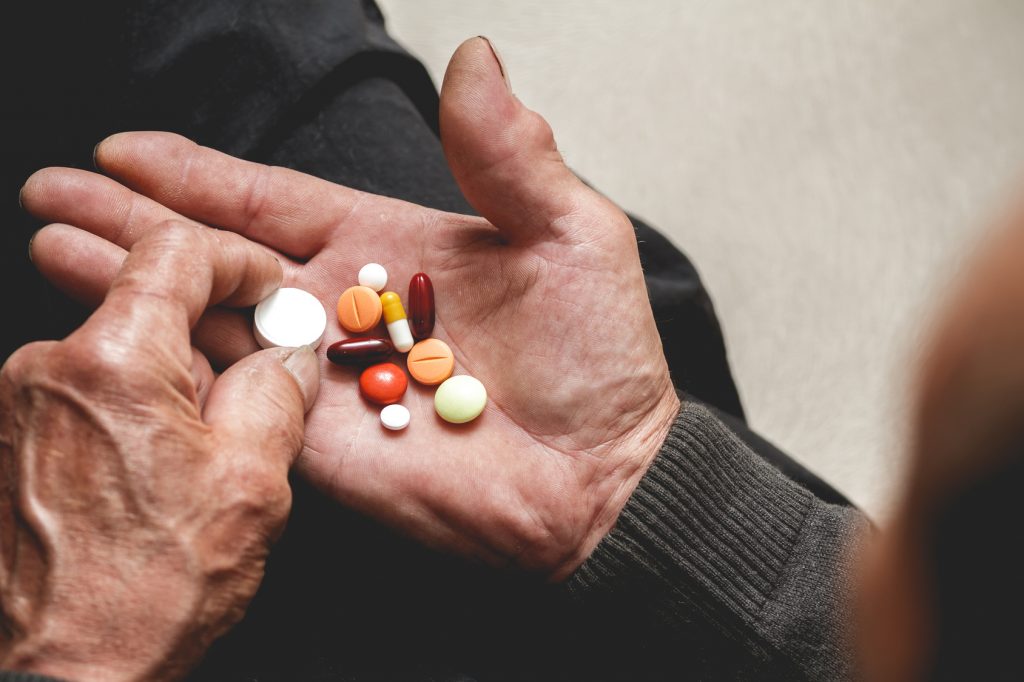
Another plastic related chemical that affect PPARy receptors are phthalates. Phthalates are used in a variety of products, and of note to the fitness minded, they are used as in dietary supplements as enteric and film coatings for timed release type supplements and to prevent premature degradation in the stomach. They are also used to prevent stomach upset from iron and laxatives and reduce the aftertaste in fish oil and garlic supplements and for the production of soft gelatin capsules that make it easier to swallow the product. [46] Phthalates have also been identified in prescription drugs and OTC medications such as antibiotics, analgesics (eg. aspirin, ibuprofen), cardiovascular and antiepileptic drug products.[46] Phthalates are also used in adhesives, glues, building materials, personal-care products, medical devices, electronics, detergents, packaging, children’s toys, modelling clay, waxes, paints and printing inks. They are also found in caulk, sex toys, shower curtains, vinyl upholstery, floor tiles, food containers, wrappers, pesticides, perfume, eye shadow, moisturizer, nail polish, liquid soap, and hair spray.[9] Phthalates are also used to make plastics more flexible and durable and as widespread as the aforementioned uses are, most of us are exposed to it as it is found in polyvinyl chloride (PVC) which is one of the most used plastic materials in the world. At global level, demand for PVC exceeds 35 million tonnes per annum and it is used in pipes, electrical cables, furniture and flooring.
Unfortunately phthalates leach into our food supply and are found in many fatty foods such as butter, milk and meats and are also present in the air. A survey conducted by the CDC found phthalate metabolites in the urine of most of the Americans tested and is like so many other obesogens, it is very difficult to avoid. Phthalate metabolites have been documented obesogenic activity including activating PPARy receptors and anti-androgenic effects, which may contribute to the development of obesity.[47] In vitro and in vivo studies suggest that phthalates have significant effects on the development of obesity, especially after prenatal exposure at low doses. Although few studies have examined the effects of phthalate on obesity development in humans, some work has shown that phthalates affect humans and animals in similar ways and like many other obesogens, there is enough evidence to warrant further study.
Perfluorooctanoic acid (PFOA) From Nonstick Pans To Waterproof Clothing

Also, on the list of widely used obseogens is perfluorooctanoic acid (PFOA) which like BPA is a potential endocrine disruptor and PPARy agonist. It is used as a surfactant to reduce friction and is also used in nonstick cookware, Gore Tex waterproof clothing, Scotchgard stain repellent on carpeting, mattresses and microwavable food items like popcorn. It persists indefinitely in the environment and has been found in drinking water, food, house dust, indoor and outdoor air and has been detected in the blood of 98% of the American population.[31,32,33] Other notable obesogens include tributyltin (TBT)─which is used as a fungicide and wood preservative and has been found in the house dust of many homes, and heavy metals such as cadmium, arsenic and lead which are often found in fertilizers, plastic production and wood preservatives.[14] All have been shown to exert endocrine disrupting effects and require further study.
How Plastics And Environmental Toxins Can Make You Fat: How To Avoid Obesogens
The main obstacle we face when dealing with obesogens is that the effects of early life and prenatal exposure may be irreversible and those of us susceptible to their effects will have a harder time maintaining their body weight in the face of Western eating habits. Obesogen exposure does not mean that weight loss is impossible, it just means that you may be more susceptible to gaining weight if you eat a poor diet high in fat and processed carbohydrates.[37] It might also mean that it could be harder for you to stop overeating given the brain pathways affected by obesogens, but this does not take away free will. We all might have to work harder to maintain a healthy body weight when compared to someone several decades ago, but those comparisons don’t mean much of anything for us today as healthy living is an individual pursuit where you do the best you can as it is all that matters. Perhaps it is harder today but the non-drug-using men and women in great shape whom we admire probably had to a work a bit harder than their grandparents to get where they are and the fact that it can be done is all that matters. You cannot let the idea of obesogenic exposure become an excuse for not working hard at watching what you eat and exercising regularly as this more than anything else will ultimately determine whether you maintain a healthy body weight or not.
On a practical level, you can limit potential health effects from adult exposure by filtering your water, avoiding fruits and vegetables grown with heavy pesticide use, avoiding foods cooked in nonstick pans and minimizing the use of plastics and BPA products in your everyday life as much as possible. Exposure to obesogens is simply one of the risk/benefit prices we pay for the conveniences of modern life and, in the case of DDT, for the long-term health, prosperity and development that we enjoy in most developed countries. Researchers agree that far more studies are needed of obesogenic chemicals to understand precisely how they affect us and how to limit human exposure, but in the meanwhile it’s up to us to keep living a healthy lifestyle and doing our best to avoid them when we can.
High Intensity Bodyweight Training: Ballistic Pushups & Dips!
This was a tough one!
Starts out with ballistic push ups (like clap pushups but without the clap as my wrist is still not 100%) nonstop for 20 reps, then all out on dips for 10 reps.
To say it was painful would be an understatement, but you just have to push through and keep on going.
Still training, hope you are too and as always, Excelsior!!! #naturallyintense
#hometraining #homeworkout #homeworkout #highintensitytraining #naturalbodybuilder #naturalbodybuilding #fitover40 #naturalbodybuildingvideos #chestday #chesttraining #naturalbodybuildingtips #pushups #dips #bodyweighttraining #highintensitytrainingtips #drugfreebodybuilding #calesthenics
Kevin's Unconventional Biceps Training- 3-6 Minutes a Week!
In this video I go over my biceps training using the Naturally Intense High Intensity Training protocols that helped me go from having arms measuring 11.5 to 12 inches to 18 inches drug free!
It's an unconventional approach for certain, but it's one that's helped my arms grow and the hundreds of men and women I have trained over the past 30 plus years.
Now, my success isn't due to being genetically gifted, as it took me the better part of 11 years to get my arms up to those measurements.
Which is significant as it works and been been proven time and time again to work for the average man or woman trying to grow their arms without drugs.
It's my hope that these high intensity training protocols can help you as much as they helped me!
Click on my bio link to see the full video on my YouTube channel and thanks as always for taking the time to look at my work!!! Excelsior!!! #naturallyintense
#highintensitytraining #naturalbodybuilder #naturalbodybuilding #fitover40 #naturalbodybuildingvideos #armworkout #bicepsworkout #naturalbodybuildingtips #biceps #armtraining #highintensitytrainingtips #drugfreebodybuilding #barbellcurls
At the Lancaster Classic Day 2 Elimination Rounds Against European Champion, and World Record Holder Leo Pettersen @leo_barebow_archer
I don't talk much about it but I'm also a competitive barebow archer (surprise!) and last Saturday I had the honor of making it to Day 2 at the Lancaster Archery Classic in the Barebow Division, as I made the top 64 out of 267 competitors and had a chance to shoot with some of the greatest barebow shooters on the planet!
I didn't make it past Leo, but it was a real rush to be there and a huge thanks to my coach, Joe MyGlyn @prolinearchery for helping me get there.
Thanks as well to my good friend @sean_chan33 for all of his help from the very start, to my line buddy Aaron Shea for taking the shot and showing up to support!
My thanks as well to rob_kaufhold for putting on and promoting one of the best archery tournaments on earth!
Thanks also to to everyone who took the time to send a supporting word and I am looking forward to next year!!! #naturallyintense #barebow
#lancasterclassic #lancasterarcheryclassic2024 #lancasterarchery #archery #fitover40 #barebowrecurve #targetarchery
Dumbo, Brooklyn circa 2004
This shot was taken as part of the promotion for my Naturally Intense DVD and was about a year after my last bodybuilding competition.
It was a grueling photoshoot.
We started at about 10 am and finished around 4pm and I was completely spent, but the more we shot the sharper I looked, so we kept on going.
It's nice to look back from time to time and as tired as I was, we all had a blast!
My thanks to @stephanie_corne_artwork, @https://pulse.ly/itgnag2dec and @ftaz1 for taking the shots!!!
Thanks for watching and as always, Excelsior!!! #naturallyintense
#naturalbodybuilder #naturalbodybuilding #throwback #fifthavenuegym #5thavenuegym #drugfreebodybuilding #naturalbodybuildinglifestyle #gymlife #gymmotivation #naturalbodybuildingmotivation #bodybuilding #blackandwhite #instablackandwhite #bnw
Can You Build An Impressive Physique Training Only At Home?
Absolutely!
I stopped training in commercial gyms as of March 2020 and have been training at home ever since.
Initially I was admittedly worried that I might lose some of my gains or not make as much progress, but that certainly wasn't the case.
I've consistently continued to improve with my high intensity workouts and muscles have no idea where they are training.
As long as the criteria of adequate intensity and overload are met, there will be an adaptive response and your muscles will get bigger and stronger.
So don't worry at all about where you train, focus instead of what will be the best way for you to always be training!
Thanks for watching and as always, Excelsior!!! #naturallyintense
Kevin's Three Day Training Spilt!
For the past 33 years I have trained three times a week with Naturally Intense High Intensity Training workouts lasting 10, 15 to 20 minutes max.
It's a training split tried and testes not only in it's helping me realize my goal of becoming a successful natural bodybuilder, but it's also helped hundreds of men and women over the past three decades.
I have tested just about every possible training split imaginable and for this particular style of high intensity training, this particular grouping consistently yields fantastic results.
I hope it helps you as much as it's helped me over the years and thanks so much for taking the time to look at my work.
Keep training hard and Excelsior!!! #naturallyintense
Excelsior!!! #naturallyintense
#trainingsplit #3daytrainingsplit #threedaytrainingsplit #naturalbodybuilding #naturalbodybuilder #naturalbodybuildingvideo #naturalbodybuildingmotivation #naturalbodybuildingtips #drugfreebodybuilding #bodybuilding #highintensitytraining #highintensitytrainingtips
405 Stiff Leg Deadlift for 7 Reps! High Intensity Training.
First leg workout of the year and already pushing it!
I haven't done a stiff leg deadlift over 315lbs for about 3 years at this point, and I did my last set with 315lbs and comfortably got to 10 reps and decided I had far too much gas left in the tank and that I should go up in weight.
So I did.
I figured I might get a solid 6 reps in, but I made it to 7 and I think I could have gone on to get a full 10 reps BUT that's when good judgement prevailed.
As a bodybuilder having not trained this heavy for so many years, the shock of this much weight would be more than enough to stimulate muscle growth, and doing more reps wouldn't yield any greater returns, only increase the likelihood of injury.
It's not about the numbers, it's about training to a point where you achieve your goal, and it's important to have a goal in mind as a bodybuilder based on increasing muscle mass rather than hitting a particular number.
Besides, if in my 20's I never did more than 405lbs on a stiff leg deadlift, it doesn't make any sense going heavier than when I am almost 50!
Could I deadlift more at this point?
Absolutely but just because you can doesn't mean you should!
So keep those weights in a good working range, keep it safe and as always Excelsior!!! #naturallyintense
#hometraining #homeworkout #homeworkout #roguerack #highintensitytraining #naturalbodybuilder #naturalbodybuilding #fitover40 #naturalbodybuildingvideos #backworkout #naturalbodybuildingtips #backtraining #highintensitytrainingtips #drugfreebodybuilding #fitoverforty #deadlift
Turning 50 in a few months...
Not much of a big deal for me as I still feel pretty much the same but I hope that my example helps show what can be done with a lifetime commitment to eating well and training consistently!
Thanks for coming along on the journey and as always, Excelsior!!! #naturallyintense
#naturalbodybuilder #naturalbodybuilding #healthylifestyle #fitover40 #drugfreebodybuilding #naturalbodybuildingmotivation #natty #fitness
Please note that all material is copyrighted and DMCA Protected and can be reprinted only with the expressed authorization of the author.
CLICK FOR A FREE COPY OF KEVIN’S WEIGHT LOSS EBOOK!
Featured everywhere from the Wall Street Journal to CBS News, Kevin Richardson’s Naturally Intense High Intensity Training have helped hundreds lose weight and transform their bodies with his 10 Minute Workouts. One of the top natural bodybuilders of his time, Kevin is also the international fitness consultant for UNICEF and one of the top personal trainers in New York City.
References for How Plastics and Environmental Toxins Can Make You Fat
- Brown, Ruth E. et al. Secular differences in the association between caloric intake, macronutrient intake, and physical activity with obesity. Obesity Research & Clinical Practice 2015
- Flegal KM, Carroll MD, Kit BK, Ogden CL. Prevalence of obesity and trends in the distribution of body mass index among US adults, 1999–2010. Journal of the American Medical Association. 2012
- Ogden CL, Carroll MD, Kit BK, Flegal KM. Prevalence of obesity and trends in body mass index among US children and adolescents, 1999–2010. Journal of the American Medical Association. 2012
- Obesity and overweight: Fact sheet N°311. World Health Organization 2015
- National Institutes of Health. Clinical guidelines on the identification, evaluation, and treatment of overweight and obesity in adults: The evidence report. National Heart, Lung, and Blood Institute; September 1998.
- Barf RP, Desprez T, Meerlo P, Scheurink AJ. Increased food intake and changes in metabolic hormones in response to chronic sleep restriction alternated with short periods of sleep allowance. Am J Physiol Regul Integr Comp Physiol. 2011
- Taheri S, Lin L, Austin D, Young T, Mignot E. “Short Sleep Duration Is Associated with Reduced Leptin, Elevated Ghrelin, and Increased Body Mass Index”.2004
- Lyytikäinen P, Rahkonen O, Lahelma E, Lallukka T. Association of sleep duration with weight and weight gain: a prospective follow-up study. J Sleep Res. 2011
- Nielsen LS, Danielsen KV, Sørensen TI. Short sleep duration as a possible cause of obesity: critical analysis of the epidemiological evidence. Obes Rev. 2011
- Leproult R, Van Cauter E.Role of sleep and sleep loss in hormonal release and metabolism.Endocr Dev. 2010
- Arble DM, Bass J, Laposky AD, Vitaterna MH, Turek FW. Circadian timing of food intake contributes to weight gain.Obesity (Silver Spring). 2009
- Patton DF, Mistlberger RE. Circadian adaptations to meal timing: neuroendocrine mechanisms. Frontiers in Neuroscience 2013
- Janesick A, Blumberg B. Obesogens, stem cells and the developmental programming of obesity. Int J Androl. 2012
- Holtcamp W. Obesogens: An Environmental Link to Obesity. ———–
- Lustig RH, ed. Obesity before Birth: Maternal and Prenatal Influences on the Offspring. New Yok NY Springer 2010
- Grun F et al. Endocrine-disrupting organotin compounds are potent inducers of adipogenesis in vertebrates. Mol Endocinol 2006
- Manikkam M, et al. Plastics derived endocrine disruptors (BPA, DEHP and DBP induce epigenetic transgenerational inheritance of obesity, reproductive disease and sperm epimutations. PLOS ONE 2013
- Larsen TM, Toubro S, Astrup A. Ppargamma agonists in the treatment of type ii diabetes: Is increased fatness commensurate with long-term efficacy? Int J Obes Relat Metab Disord. 2003
- Rubenstrunk A, Hanf R, Hum DW, Fruchart JC, Staels B. Safety issues and prospects for future generations of ppar modulators.Biochim Biophys Acta.2007
- Berken GH, Weinstein DO, Stern WC. Weight gain. A side-effect of tricyclic antidepressants. J Affect Disord. 1984
- Nemeroff CB. Dosing the antipsychotic medication olanzapine. J Clin Psychiatry. 1997
- Evans RM, Barish GD, Wang YX. Ppars and the complex journey to obesity. Nat Med. 2004
- Tontonoz P, Spiegelman BM. Fat and beyond: The diverse biology of ppargamma.Annu Rev Biochem.2008
- National Academy of Sciences, Committee on Research in the Committee on Research in the Life Sciences of the Committee on Science and Public Policy. 1970
- Skinner MK, Manikkam M, Tracey R, Guerrero-Bosagna C, Haque M, Nilsson EE.Ancestral dichlorodiphenyltrichloroethane (DDT) exposure promotes epigenetic transgenerational inheritance of obesity. BMC Med. 2013
- Jansick AS, et al. Environmental Chemicals and obesity. Handbook of Obesity Vol 1, 3rd ed. Bray JA, Bouchard C. eds. CRC Press 2014
- Grens K. Obesogens. The Scientist Magazine 2015
- Welshons WV1, Nagel SC, vom Saal FS. Large effects from small exposures. III. Endocrine mechanisms mediating effects of bisphenol A at levels of human exposure. Endocrinology. 2006
- U.S. Center for Disease Control and Prevention, The 2003-2004 National Health and Nutrition Examination Survey.
- U.S. FDA. Bisphenol A (BPA): Use in Food Contact Application
- Schecter A, Colacino J, Haffner D, Patel K, Opel M, Päpke O, Birnbaum L. Perfluorinated Compounds, Polychlorinated Biphenyl, and Organochlorine Pesticide Contamination in Composite Food Samples from Dallas, Texas. Environ. Health Perspect. 2010
- Langer V, Dreyer A, Ebinghaus R. Polyfluorinated compounds in residential and nonresidential indoor air. Environ. Sci. Technol. 2010
- D’eon JC, Mabury SA. Exploring Indirect Sources of Human Exposure to Perfluoroalkyl Carboxylates (PFCAs): Evaluating Uptake, Elimination and Biotransformation of Polyfluoroalkyl Phosphate Esters (PAPs) in the Rat. Environ Health Perspect 2010
- von Kries R, et al. Maternal smoking during pregnancy and childhood obesity. Am J Epidemiol. 2002
- Bergmann KE, et al. Early determinants of childhood overweight and adiposity in a birth cohort study: role of breast-feeding. Int J Obes. 2003
- CDC. Smoking & Tobacco Use: Secondhand Smoke (SHS) Facts. [website]. Atlanta, GA:Centers for Disease Control and Prevention 2011
- Gao Y-J, et al. Prenatal exposure to nicotine causes postnatal obesity and altered perivascular adipose tissue function. Obes Res. 2005
- Barker DJ, Osmond C, Golding J, Kuh D, Wadsworth ME. Growth in utero, blood pressure in childhood and adult life, and mortality from cardiovascular disease. BMJ. 1989Barker DJ, Osmond C, Golding J, Kuh D, Wadsworth ME. Growth in utero, blood pressure in childhood and adult life, and mortality from cardiovascular disease. BMJ. 1989
- Odermatt A, Gumy C. Glucocorticoid and mineralocorticoid action: Why should we consider influences by environmental chemicals? Biochem Pharmacol. 2008
- Karmaus W, Osuch JR, Eneli I, Mudd LM, Zhang J, Mikucki D, Haan P, Davis S. Maternal levels of dichlorodiphenyl-dichloroethylene (dde) may increase weight and body mass index in adult female offspring. Occup Environ Med. 2009
- Mendez MA, Garcia-Esteban R, Guxens M, Vrijheid M, Kogevinas M, Goni F, Fochs S, Sunyer J. Prenatal organochlorine compound exposure, rapid weight gain, and overweight in infancy. Environ Health Perspect. 2011
- Lu M, Sarruf DA, Talukdar S, Sharma S, Li P, Bandyopadhyay G, Nalbandian S, Fan W, Gayen JR, Mahata SK, Webster NJ, Schwartz MW, Olefsky JM. Brain ppar-gamma promotes obesity and is required for the insulin-sensitizing effect of thiazolidinediones. Nat Med. 2011
- Myers MG Jr. Burant CF. Ppar-gamma action: It’s all in your head. Nat Med. 2011
- Ryan KK, Li B, Grayson BE, Matter EK, Woods SC, Seeley RJ. A role for central nervous system ppar-gamma in the regulation of energy balance. Nat Med. 2011
- Trasande L, Attina TM, Blustein J. Association between urinary bisphenol A concentration and obesity prevalence in children and adolescents. JAMA. 2012
- D.-K. Li et al. 0Urine bisphenol-A level in relation to obesity and overweight in school-age children. PLOS One 2013
- Katherine E. Kelley,corresponding author1 Sonia Hernández-Díaz, Erica L. Chaplin,1 Russ Hauser, and Allen A. Mitchell. Identification of Phthalates in Medications and Dietary Supplement Formulations in the United States and Canada. Environ Health Perspect. 2012
- Kim SH,Park MJ.Phthalate exposure and childhood obesity. Ann Pediatr Endocrinol Metab. 2014


